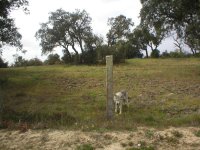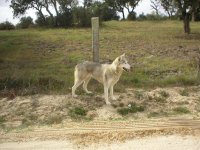jpoyner
Well-known member

Just wondered if anyone has much experience of Iberian Wolf, found in Spain and Portugal. I snapped this photo of an animal which appeared out of a deserted area of cork oak woodland near Lisbon. There is actually a wolf rehabilitaion reserve not a million miles away. As they are supposed to be smaller and lighter built than eastern european wolves I began to wonder. Or is it just a wild dog. Any thoughts?
John
John








